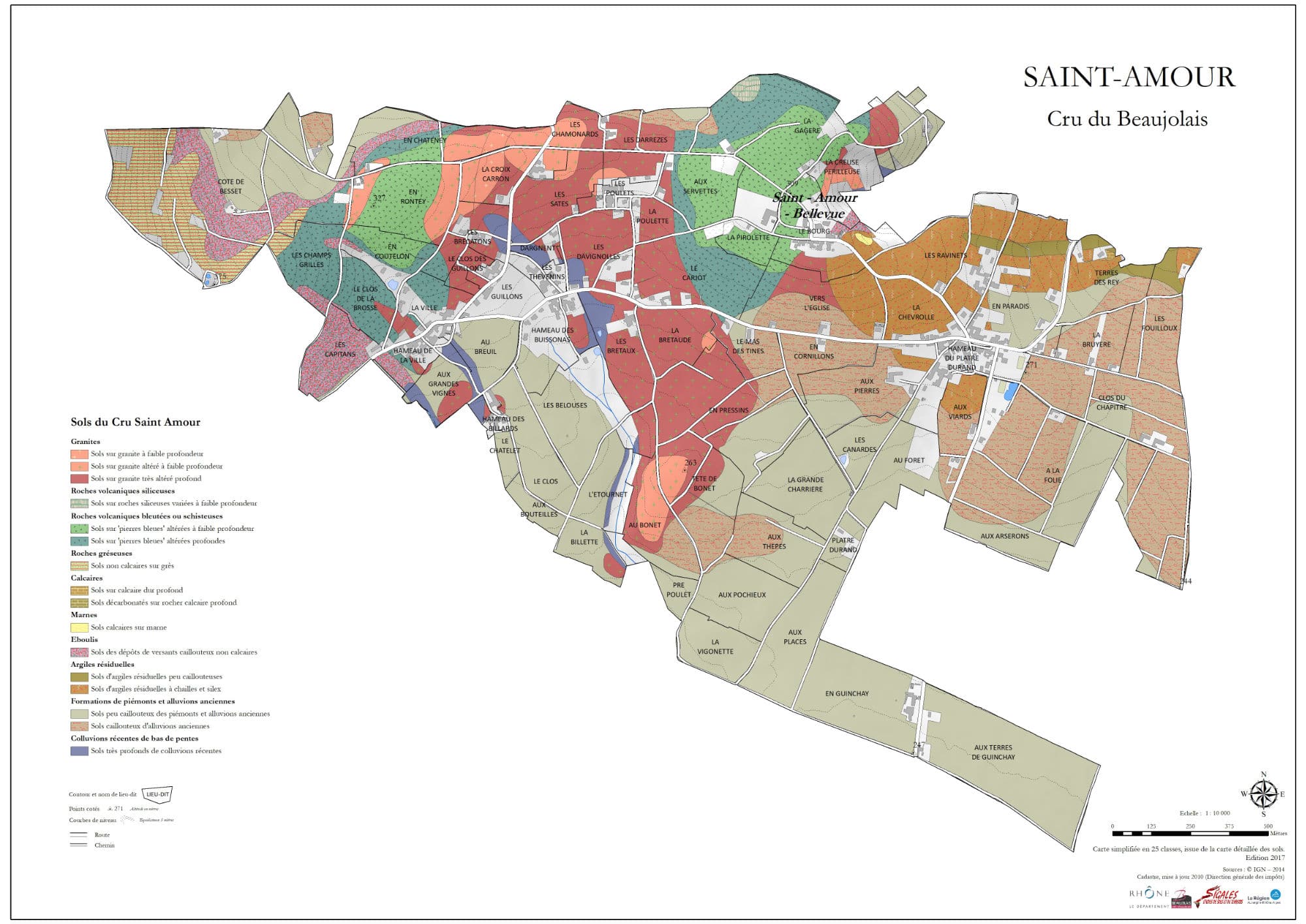Saint-Amour
WARM, INTENSE REDS
The Saint-Amour AOC is located in the commune by the same name, in Saône-et-Loire. Its mixed soil includes granite, schist and clay, producing wines with two different characters. One is light and easy-to-drink, with aromas of iris or violet and even raspberry. The other is powerful and complex, offering aromas of kirsch and spice.
The Saint-Amour appellation: an overview
La célébration de l’amour et des couples épris est omniprésente sur les terres de Saint-Amour. En plus d’y cultiver un tendre vin rouge aux multiples facettes, cette charmante bourgade du Beaujolais célèbre Cupidon à tous les coins de rue.
C’est avec le cœur léger que vous allez découvrir cette adorable appellation de la région : le Saint-Amour…
- CommuneSaint-Amour-Bellevue
-
Lieux-dits
- En Paradis
- À la Folie
- Côte de Besset
- Les Ravinets
- Hameau des Billards
- Vers l’Église
- Aux Terres de Guinchay
- Clos du Chapitre
- La Pirolette and Au Breuil
- Altitude280 metres
- Soilpiedmont deposits (48%), granite (22%), blue stone (9,9%), limestone, marl, clay
- Surface Area315 hectares
Characteristics
of Saint-Amour appellation
- Tastingfruity, tender, harmonious
- Tasting occasion
- Nosekirsch, spice or peony, iris, raspberry, violet
- Culinary suggestions
spaghetti with green veggies, burrata and pistachio pesto, raspberry chocolate fondant
- Colourclear ruby red
- Serving temperature12-14°C
- Palatelively with good balance, fruity and floral
Learn more
about the Saint-Amour appellation
A wine that’s half-angel, half-demon
Delicately pampered by 50 devoted winegrowers, Saint-Amour draws its emotional depth from the variety of soils making up its terroir. Despite what its name seems to suggest, the tastes flowing from its bottles are not all tender.
The famous Beaujolais cru can be sometimes angelic, sometimes demonic. Depending on the vinification process, Saint-Amour wines can be light and fruity or complex and powerful.
In the first instance, maceration is short, bringing to the fore the notes of iris and violet or even raspberry, and the liveliness of this delicate wine.
In the second case, the tannins develop more and reinforce the balanced bouquet with kirsch and spice notes. Saint-Amour wine produced this way is at its best and most intense after 5 years. However, that shouldn’t keep you from drinking it earlier or later. It all depends on what you are looking for in a wine.
A village that sings an ode to love
Everything about this appellation is reminiscent of the intense feelings of a passionate love affair.
The commune itself is very much about romance, with its statue of the legionary Saint-Amor near the church, a town hall that is the venue for many weddings, as well as hotels and restaurants with suggestive names like the “Auberge du Paradis”, “Ô Coeur du Paradis” and “Au 14 Février”.
A year-round companion
Although its name means that it attracts particular attention on Valentine’s Day, Saint-Amour is actually drunk year round. Young Saint-Amour wines are good aperitif wines or pair well with summer dishes like barbecues, Mediterranean vegetable tarts, carpaccio or cold verrines.
In autumn, this famous Beaujolais cru – the long maceration version – adds a little zing to your pumpkin purée, veal risotto, tomato crumble or pork filet mignon.
Whereas in winter, it warms hearts when served with guineafowl, stuffed turkey or poularde in gravy.
Saint-Amour wines caress your palate with a harmonious, fleshy bouquet. Tender at times, and at others racy, this famous Beaujolais cru is your faithful year-round companion.



